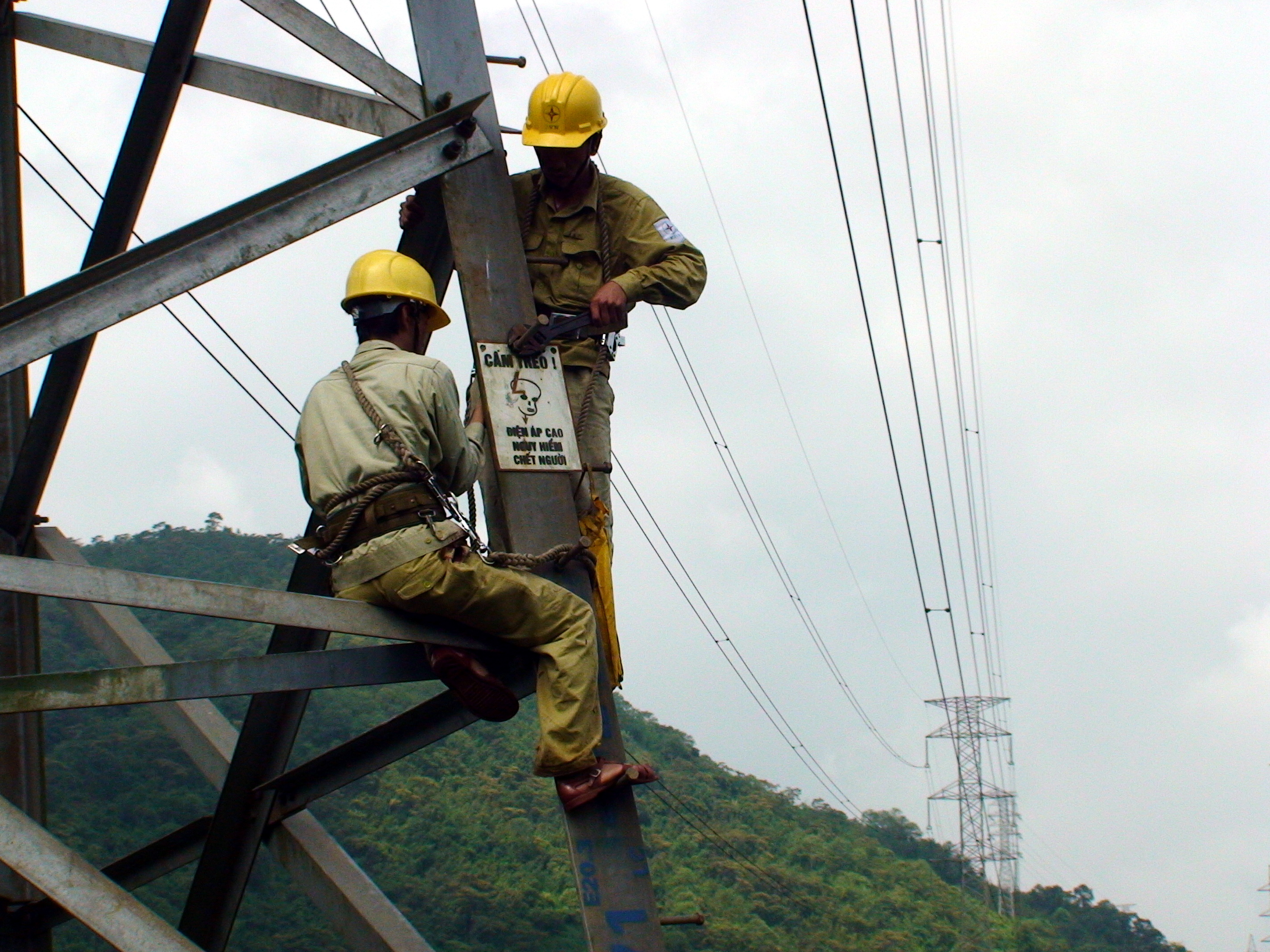Even though they work closely with the electricity poles and grids, a special type of employees at power companies in Vietnam are not called electricians.
>> An audio version of the story is available here
Such power employees belong to the electricity conveying unit, handling ‘the hardware’ and wearing olive uniforms, with their job focusing on periodically taking care of, and repairing electricity poles and power grids.
They are different from electricians, who are involved in the operation of electric currents and wear orange uniforms.
The caretaking job is a tough one, which includes walking through deep forests monthly; climbing up poles which are 60-120 meters in height; hanging on the grid for hours; manually carrying tons of steel and materials for repairs; and patrolling at night to check for electric sparks every three months.
A high-voltage electricity pole is as tall as a 15-30 story building.
They work above the canopy of trees and under different weather conditions, from white frost in the northwest region to scorching sunlight, jungle rain, thunder and lightning.
Electricity poles may be planted on top of mountains, at the edge of an abyss or in a mountain creek. But regardless of what the locations are, the power pole caretakers still have to fulfill their jobs.
Porter and lumberjack
The olive-clad electricity workers admit that they are both porters and lumberjacks.
An electricity conveying team, or simply the olive team, of Tuyen Quang Province in the northwest of Vietnam was preparing to set off at 3:00pm one day for a night patrol.
Night patrols are conducted every three months to discover electric sparks, a sign of problems in joints on the grid.
Do Minh Chuc, vice head of the team, was preparing special tools for his trip through the forest, including spanners, ropes, a pulley, a lighter, a flashlight, a big knife, rice, salt and insect lotion.
Per regulations, the team takes night patrols every three months and day patrols every month to check the grid from 110 – 500kV.
At 5:00pm, the group arrived at the edge of the forest and was about to walk onto the paths.
Pointing at a pole rising above the forest canopy, Chuc said he and his team would climb up it in an hour.
“The journey to walk along electricity poles at night will only start then,” he said.
Trinh Van Ban, a local in Chau Yen Commune, Yen Son District, Tuyen Quang Province, admitted, “We locals have never reached the top of some mountains in these nearby forests because the stones there are sharp.
“But these olive men come periodically.”

A worker is clearing his way in jungle to reach a high voltage electricity pole (Photo: Tuoi Tre)
It is hard work on night patrols because they have to both grope for the way in the hilly areas, look up at the grid above to find out if there are any sparks, and be alert for dangers from poisonous snakes, worms the size of a man’s wrist, and bushes.
If a pole has a problem from storms and strong winds, the olive team must repair it, creating more hard work because they have to manually carry heavy materials on paths that are inaccessible to machines.
“It is not different from being a porter,” he added.
Spider men
The olive team has to hang high above the grid and check each joint of the electricity wires.
The ‘spider men’ hang on the safety line above and walk with their bare feet on the grid.
Four men walk on four wires at the same time to support one another in case of problems.
Strong wind can startle a worker and cause him to lose his step. Then he must be helped by others to set foot on his electricity wire again.
It takes an hour to walk a kilometer on the grid under scorching sunlight or jungle frost.

Electricity workers are hanging themselves on an electricity pole (Photo: Tuoi Tre)
But it is the most dangerous when rain comes suddenly because of the impact of electric discharge during raining.
It often takes an hour to climb up or down from the peak of a high voltage electricity pole, but heavy rain may come suddenly.
The other challenge is the long distance of a kilometer between two poles of the high voltage grid.
Walking on the grid in the middle of the two poles may feel like being drunk or seasick because of the wide fluctuations.
Lightning is another fatal risk for the olive team.
Vietnam’s northwestern region has iron ore that attracts more lightning.
Electricity workers have equipment to keep safe, but it is impossible to prevent a man being directly struck by lightning in the open sky.
And lightning is always attracted towards tall, metal electricity poles.
The Tay Bac (northwestern) electricity conveying company has 132 workers who are tasked to take care of over 300km of 500kV grid and 600km of 220kV grid.




















































